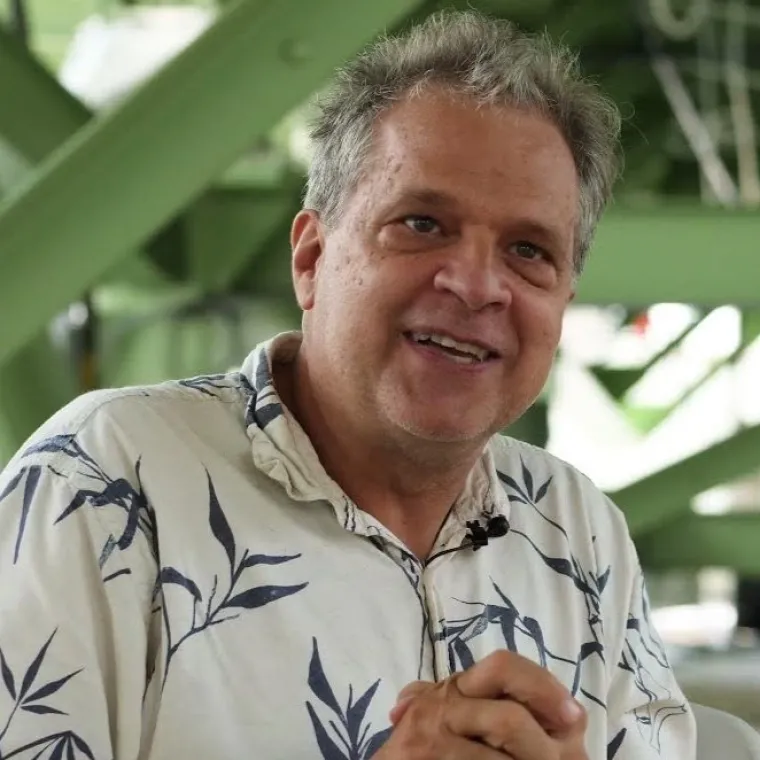Scott Saleska
Positions and Education:
- 2017-present Professor, University of Arizona, Ecology & Evolutionary Biology
- 2008-present Joint Appointment, UA Soil Water, and Environmental Sciences (SWES)
- 2005-present Faculty Affiliate, UA Institute of Environment (IE)
- 2011-2017 Associate Professor, University of Arizona, Ecology & Evolutionary Biology
- 2012 Visiting Academic, University of Queensland, Brisbane, Australia
- 2005-2011 Assistant Professor, Ecology and Evolutionary Biology, University of Arizona
- 2002-2004 Research Associate, Earth & Planetary Sciences, Harvard University
- 1999-2001 Post-doctoral Fellow, Earth & Planetary Sciences, Harvard University
- 1998 Ph.D., Energy and Resources, University of California, Berkeley
- 1986 B.S., Physics, Massachusetts Institute of Technology
Honors and Awards:
- 2019 Elected Fellow of the Ecological Society of America
- 2014-present Agnese Nelms Haury Faculty Fellow in Environment and Social Justice
- 1996-1998 NSF Doctoral Dissertation Grantee
- 1994-1997 NASA Global Change Fellow
Research Interests:
In my research, I ask “How does the structure and function of terrestrial vegetation and microbial communities regulate large-scale biogeochemical processes?” As a global change ecologist, I focus in particular upon how ecological communities regulate land surface interactions with the atmosphere and with climate, from local to global scales. This is an important research area because the response of living communities to climate change is one of the largest uncertainties in predicting the future of climate on earth.
A fundamental challenge in global change ecology is in scaling from individual organs or organisms (such as leaves of trees, or microbial communities, where biological information is richest) to the landscape or ecosystem (where interactions with the atmosphere and climate are manifest). My group tackles this challenge using a range of tools from ecophysiology and ecosystem ecology, micrometeorology and atmospheric science, remote sensing and process-based mathematical modeling, and most recently, microbial meta-omics and bioinformatics.
Selected Publications:
PubMed list of publications for Scott Saleska
- J. B. Mcmanus, D. D. Nelson, J. H. Shorter, R. Jimenez, S. Herndon, S. R. Saleska, M. Zahniser. 2005. A high precision pulsed QCL spectrometer for measurements of stable isotopes of carbon dioxide. J. Modern Optics, 52 (16): 2309-2321
- Saleska, S; J. Shorter, S. Herndon, R. Jimenez, B. McManus, D. Nelson, M. Zahniser. 2006. What are the instrumentation requirements for measuring the isotopic composition of net ecosystem exchange of CO2 using eddy covariance methods? Isotopes in Environmental and Health Studies, 42 (2), in press.
- Xiao, X., Q. Zhang, S.R. Saleska, L. Hutyra, P. Camargo, S. Wofsy, S. Frolking, S. Boles, M. Keller and B. Moore III. Satellite-based modeling of gross primary production in a seasonally moist tropical evergreen forest. 2005. Remote Sensing of Environment. 94: 105–122.
- Dunne, J.A., S.R. Saleska, M.L. Fischer, J. Harte (2004). Integrating experimental and gradient methods in ecological climate change research. Ecology. 85: 904-916.
- Martens, C.S., T.J. Shay, H.P. Mendlovitz, D.M. Matross, S.R. Saleska, S.C. Wofsy, W.S. Woodward, M.C. Menton, J.M.S. Moura, P.M. Crill, O.L.L. de Moraes, R.L. Lima (2004). Radon fluxes in tropical forest ecosystems of Brazilian Amazonia: night-time CO2 net ecosystem exchange derived from radon and eddy covariance methods. Global Change Biology. 10: 618-629.
- Saleska, S.R., S.D. Miller, D.M. Matross, M.L. Goulden, S.C. Wofsy, H. da Rocha, P.B. de Camargo, P.M. Crill, B.C. Daube, C. Freitas, L. Hutyra, M. Keller, V. Kirchhoff, M. Menton, J.W. Munger, E.H. Pyle, A.H. Rice, H. Silva (2003). Carbon in Amazon forests: unexpected seasonal fluxes and disturbance-induced losses. Science. 302: 1554-1557.
- Rice, A.H., E.H. Pyle, S.R. Saleska, L. Hutyra, M. Palace, M. Keller, P.B. de Camargo, K. Portilho, D.F. Marques, and S.C. Wofsy (2004). Carbon balance and vegetation dynamics in an old-growth Amazonian forest. Ecological Applications.
- Saleska, S.R; M.R. Shaw, M. Fischer, J. Dunne, C.J. Still, M. Holman, and J. Harte (2002). Plant community composition mediates both large transient decline and predicted long-term recovery of soil carbon under climate warming. Global Biogeochemical Cycles. 16(4): 1055, doi:10.1029/2001GB001573.
- Barford, C.C., S.C. Wofsy, M.L. Goulden, J.W. Munger, E.H. Pyle, S.P Urbanski, L.Hutyra, S.R. Saleska, D. Fitzjarrald. K. Moore (2001). Factors Controlling Long- and Short-Term Sequestration of Atmospheric CO2 in a Mid-latitude Forest. Science. 294: 1688-1691.
- Saleska, Scott R., John Harte, and Margaret S. Torn (1999). The effect of experimental ecosystem warming on CO2 fluxes in a montane meadow. Global Change Biology. 5: 125-141.


